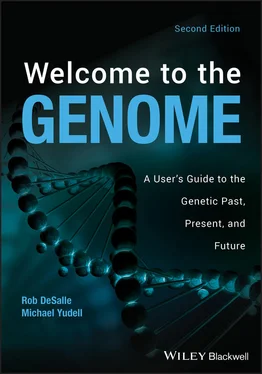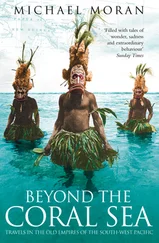Every living thing on Earth—every plant and animal, every bacterium, and even viruses—shares one of the most fundamental structures of life, molecules called nucleic acids. When DNA came to be known as the stuff of heredity, focus immediately shifted from simply understanding its function to understanding its physical structure and chemical characteristics as well. Although work in this area had begun over 70 years earlier in Germany when Friedrich Miescher discovered nucleic acids in 1869, it was Avery, McCarty, and MacLeod’s discovery that unleashed what one observer called a “veritable ‘avalanche’ of nucleic‐acid research.” (70) Many scientists in related fields excitedly began studying DNA, including biochemist Erwin Chargaff, who remodeled himself as a molecular biologist and shifted his work to studying nucleic acids. This was a particularly common move among biochemists, who were well suited for DNA research because of their training in chemistry and biology.
With DNA’s structure as yet unknown, Chargaff turned his attention to the chemical characteristics of nucleic acids. In DNA there were four known bases—adenine, guanine, cytosine, and thymine–which are commonly referred to by their first letters, A, G, C, and T. Each of these bases has different structures and characteristics. Analyzing the number of these bases with a chromatographic technique, Chargaff came to a startling conclusion—in all the organisms he studied the amount of A in any given cell was always equal to the amount of T in the same cell. The same went for G and C. The ratio of A to T and G to C was always 1. This 1:1 ratio became known as Chargaff’s rule and is still one of the cornerstones of molecular biology. (71)
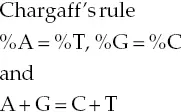
Many wondered how Nature could be so exact across all species on Earth. The significance of Chargaff’s rule would not be entirely clear until the three‐dimensional structure of nucleic acids was determined. To do this, scientists had to take an actual look at the physical structure of DNA, which they began to do in the 1940s. Once they “saw DNA,” the pieces of the puzzle fell into place very quickly.
Genetics in the twentieth century saw many milestones, including the work we have already described by scientists like Morgan, Avery, and Chargaff. This work and the work of their collaborators and colleagues propelled the revolution in genetics forward. Their discoveries alone are striking for the ways in which they advanced thinking in heredity. The discovery of the structure of DNA in 1953, however, has garnered all of the headlines. On both sides of the Atlantic scientists were working on cracking the structure of DNA. Solving this puzzle was important because it would expose the fundamental structure of heredity and show how the molecule at the center of life replicates itself and functions. Although chemists had already identified the molecular components of DNA—“that nucleic acids were very large molecules built up from smaller building blocks, the nucleotides”—James Watson remembers that in the years preceding the discovery of DNA’s structure “there was almost nothing chemical that the geneticist could grasp at.” (72) Three prominent groups worked on solving this problem: James Watson and Francis Crick at Cambridge University, Maurice Wilkins and Rosalind Franklin at King’s College, London, and Linus Pauling and Robert Corey at the California Institute of Technology.
Work on unraveling the structure of DNA was most intense during 1952 and early 1953. In January 1953 Pauling’s group claimed that it had solved the puzzle, proposing that DNA was a triple‐stranded helix. Pauling, who had already uncovered the structure of proteins, was perhaps overzealous in his pursuit of deciphering the structure of DNA, and as a result, one of the greatest chemists in the world made an error in his calculations. (73) Scientists in England quickly picked up on Pauling’s mistake. Watson and Crick recognized the error immediately as one they had almost made more than a year earlier. In the wake of this miscalculation they quickened the pace of their own research. (74)
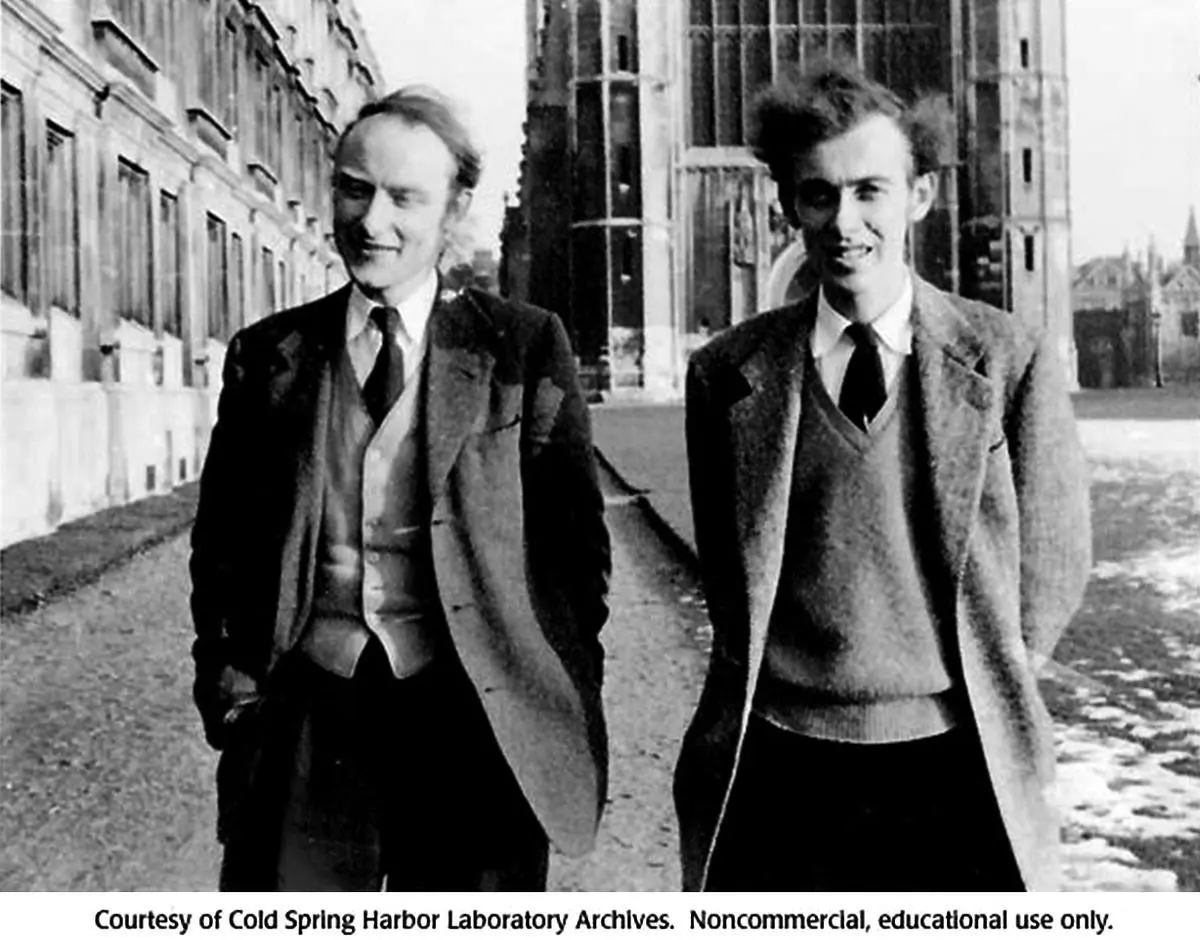
Figure 1.8James Watson and Francis Crick are seen here at Cambridge University around the time of their discovery of the structure of DNA.
Credit: DNA Learning Center, Cold Spring Harbor Laboratory
In the early 1950s the Cavendish Laboratory at Cambridge University housed an amazing faculty of physicists, biologists, and chemists who helped create an atmosphere in which Watson and Crick could conceive of and construct models of the structure of DNA. One of the important experimental tools that Watson and Crick utilized was “pictures” of molecules. This required special physical and chemical techniques because molecules are so small. Snapshots could be taken of these extremely small molecules by first making crystals of proteins and other small molecules like nucleic acids. To take a “snapshot” of DNA, small waves of X‐rays were passed through the crystals. The diffraction of these X‐rays by the atoms in the DNA crystal were in essence “pictures” of these extremely small molecules. This technique, known as X‐ray crystallography, allowed the scientists at Cavendish and other laboratories to interpret the three‐dimensional structure for any molecule that could be crystallized.
Rosalind Franklin, a physical chemist at King’s College, London, was also working on solving the structure of DNA and happened to be one of the world’s leading X‐ray crystallographers.
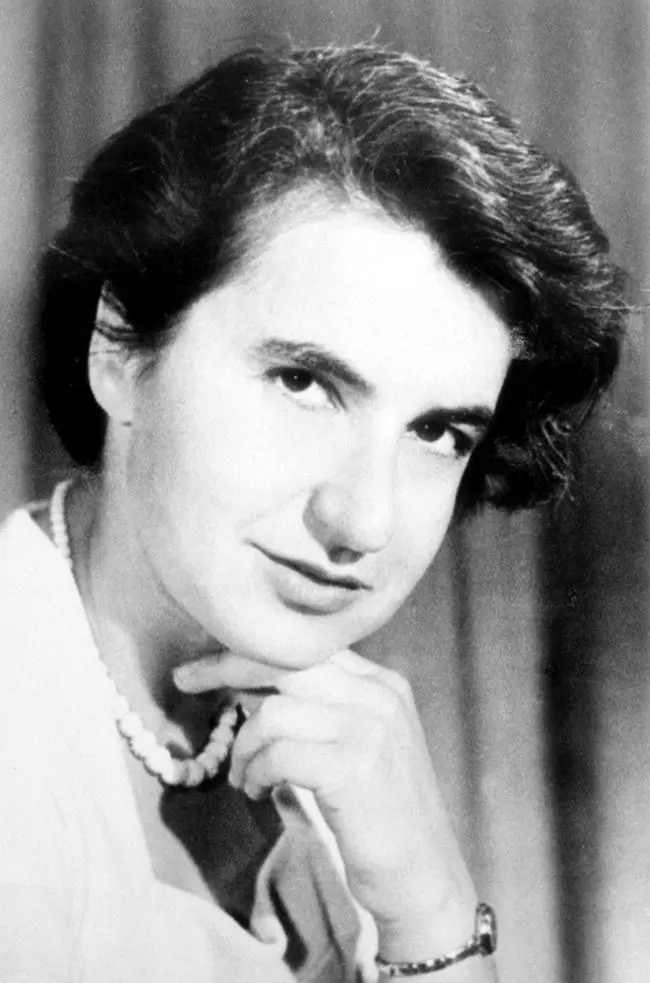
Figure 1.9Once called the “dark lady” by her colleague Maurice Wilkins, Rosalind Franklin’s valuable scientific work and her important role in the discovery of the structure of DNA have often been overlooked.
Credit: DNA Learning Center, Cold Spring Harbor Laboratory
Her DNA photos were once described as “among the most beautiful X‐ray photographs of any substance ever taken.” (75) Just a few weeks into 1953, one of these snapshots was shown to James Watson without her knowledge or permission. Watson wrote in The Double Helix , his memoir of the discovery of the structure of DNA, that “the instant I saw the picture my mouth fell open and my pulse began to race.” (76) Franklin’s superior X‐ray crystallography enabled Watson and Crick to take the intellectual leap they had needed to complete their model of DNA.
Using X‐ray data, including the measurements of the shape of DNA shown in Franklin’s photo, Watson and Crick, piece by piece, figured out that DNA was shaped like a spiral staircase or a double helix. (77) The hereditary molecule was two chains of nucleic acids connected to one another like two snakes coiled together. The sugar backbones of the nucleotides are like supports under each step in a staircase. The nucleotide bases bond to form structures that are like steps, each one rotated slightly in relation to its neighbors in the stack. The steps that span from rail to rail of each side of the staircase are of equal length because of the specific way that two nucleotides pair. To develop their model of DNA, Watson and Crick followed Chargaff’s rules closely and discovered that the double helix was complementary. That is, to form the staircase an A on one strand is always directly across from and connected to a T on the other; likewise, a G on one strand is always directly across from and connected to a C on the other. The complementary nature of the double helix revealed how DNA replicated itself and passed genetic information between generations. This process occurs during cell division when the double helix splits apart and makes identical copies of itself.
Читать дальше
